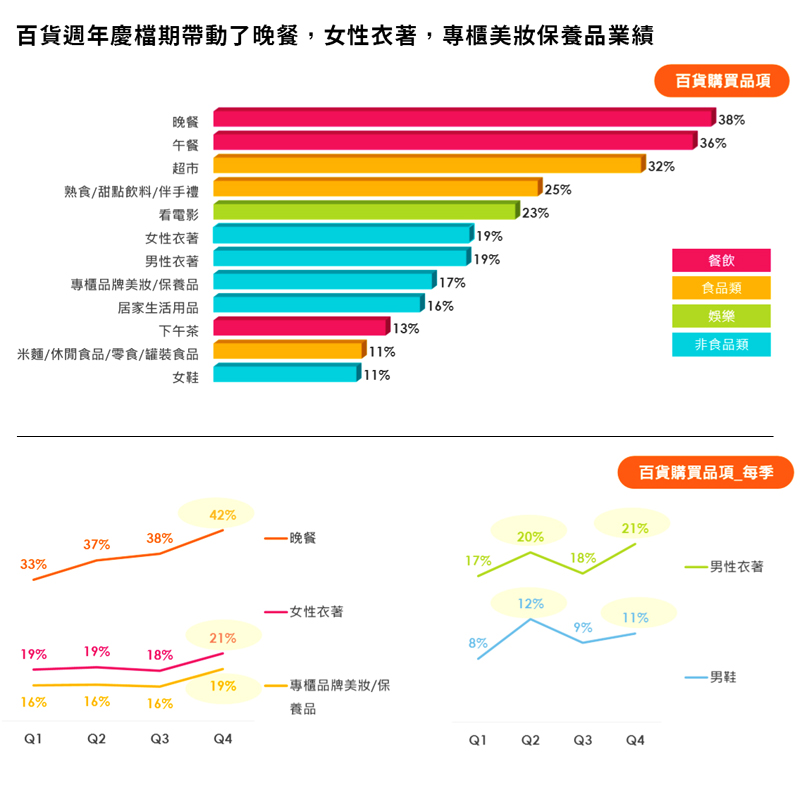05.2020 Office Talk
Thinking about the future market layout from the perspective of consumption dynamics in 2019
Tianxia innovation college /

With the continuous spread of the novel coronavirus epidemic, the impact on the future economy and consumer market cannot be underestimated. Now it is the best time to stop and think about how to forge the timing of next round of sprint. GO SURVEY released "2019 Consumer Report" to analyze the prosperity and trend of the consumer market, hoping to draw lessons from 2019 to find new ideas for enterprises and master the new market layout.
In order to understand the consumer's feelings and views on the economic conditions, employment and personal financial situation, GO SURVEY has been conducting online surveys since 2019 to immediately grasp the latest consumer market prosperity and trend.
The "2019 Consumer Report" investigated the main concerns of the public about the life issues and the increase and decrease of household expenditure, and analyzed the entities and online channels preferred by consumers in the past, as well as the main food and non-food items purchased. Now GO SURVEY will take you back to 2019 and look forward to 2020.
People are optimistic about the economic situation of individuals or families

Overall speaking, consumers are pessimistic about the domestic economic prosperity, and tend to be conservative about large-scale investment (such as real estate purchase); on the contrary, they are more optimistic about the controllable economic situation of individuals and families, preferring to keep money around and pursue a lifestyle with little happiness.
In the second half of 2019, the environment of investment, employment and economy and price of commodities gradually increased, but in the early 2020, due to the impact of the novel coronavirus epidemic, the impact expanded to all industries. When the economy slows down, the future prosperity will also decline.
People are most worried about: national economy, price rise, presidential election

When asked about the most worrying issues in the next six months, the national economy (30%) ranked first, followed by rising prices (24%) and the situation of Taiwan's presidential election in 2020 (19%).
Due to the changeable situation of Sino US trade war and its wide influence, the international economic situation has always been the topic of public concern in 2019; and the result of the presidential election affects Taiwan's political and economic situation in the future. Therefore, with the election approaching in 2020, the level of public concern has gradually increased in the second half of 2019.
Further observing the survey results in January 2020, the public's concern about the novel coronavirus has risen to the second place, and a wide range of industries were affected, and the impact on the future economic development and consumer market cannot be underestimated.
In the second half of the year, household expenditure will rise by 4% and eating out will be the main increase

The survey results show that more than 60% of the people's spending in 2019 has increased, only about 10% of the people's spending has reduced; among them, eating out, water and gas, housing loan, insurance and credit card are the main items to increase spending; leisure and entertainment, clothing accessories and 3C goods are the main items to reduce spending.
Due to the high rate of eating out for the office workers, and the fact that modern people choose to go to restaurants and taste delicious food on weekends to enjoy life, this trend also makes "eating out" expenditure become the main increase in family expenditure, which also reflects that the eating habits of people have changed. As the epidemic becomes serious, the catering industry can think about how to maintain the quality and safety of the food, seize the trend of eating out and expand business opportunities with better products.
Stable increase of shopping center consumption, rise of takeaway platform in the second half of the year
Do you know the most frequently used physical channel consumption by the public in 2019? According to the survey, convenience stores (79%) topped the list, followed by mass merchandisers (74%), department stores (69%) and supermarkets (69%). In-depth observation of the quarterly consumption profile of the entity channel, it can be found that the spending power of department stores and shopping centers presented stable growth in 2019, while the spending power of mass merchandisers showed a downward trend.

In terms of survey of online channels, e-commerce shopping (67%) is the main online shopping channel for the public in 2019, and the spending power grew slightly in the fourth quarter driven by the double 11. It is worth noting that the spending power of takeaway platform rose rapidly in the third quarter of 2019, and continued to rise in the fourth quarter. With the increase of the popularity of delivery service, people are more familiar with it and use this service more often. The takeaway platform has gradually become an indispensable channel in the daily life of modern people.
Main items of department stores: catering, food, film, men's and women's clothing
In 2019, the spending power of department stores and shopping centers showed stable growth. However, what items do people usually buy in department stores? First of all, it is mainly for dining, no matter for dinner or lunch. After all, food is the most important thing for people. Dining can be said to be a necessary expense for everyone. Second, it is to go to the supermarket, buy cooked food and dessert, watch movies, and buy men's and women's clothes. These are the main items that people buy in the department stores.
It is suggested that department stores should make good use of restaurants, supermarkets and movies to attract consumers to the stores in the future, and promote non-food businesses through marketing activities.

Further observing the consumption trend of each quarter, it can be found that the annual celebration of department stores drives the performance of dining, women's clothing and cosmetics in the fourth quarter; while men's clothing and men's shoes reached the peak driven by the two schedules in the second and fourth quarter.
Main commodities of the mass merchandisers: chilled and fresh food, toilet paper, fruits and vegetables
In terms of the items that consumers purchase in the mass merchandisers, chilled and fresh food, brewed tea, snacks and drinks are the main food items that attract consumers, while toilet paper, household cleaning, personal cleaning and women's health are the non-food items that mainly attract consumers. In addition, the third quarter is also the peak season for the sale of drinks and iced products in mass merchandisers. In addition to the above items, the drinks and iced products that meet the seasonal consumption demand have also driven many sales.
"Business planning of sales items matching with sales peak season" will be an important issue for retailers in 2020, and a comprehensive planning strategy is necessary.

Based on the above survey results, we can find that in 2019, the individual / family economy is optimistic, investment tends to be conservative, household expenditure tends to increase, and the spending power of food and delivery is strong! However, the impact of novel coronavirus on the economy and consumer market in 2020 cannot be underestimated. How to deal with the "overall freeze" of the consumer market will be a major test for retailers.
In the second half of 2019, the takeaway platform rose. Looking ahead to 2020, the opportunities will upgrade on the takeaway platform, and cooperation with the platform is a contingency plan for retailers. They can make good use of the main consumer goods to attract consumers to the store by using 2019 for reference, make full use of the hot goods to drive performance. Meanwhile, selecting seasonal goods for the large marketing schedule is still expected to drive the sales peak in 2020.
* according to the survey, "consumer market trend survey" is an online market research carried out monthly by the market research consultants of GO SURVEY since 2019, 600-800 samples were collected each month, and they were continuously tracked for 12 months, with a total samples of 8, 832, the interviewees were 18-70 years old and HAPPY GO cardholders who consumed in department stores, mass merchandisers, supermarkets or online platforms in the past month.


















